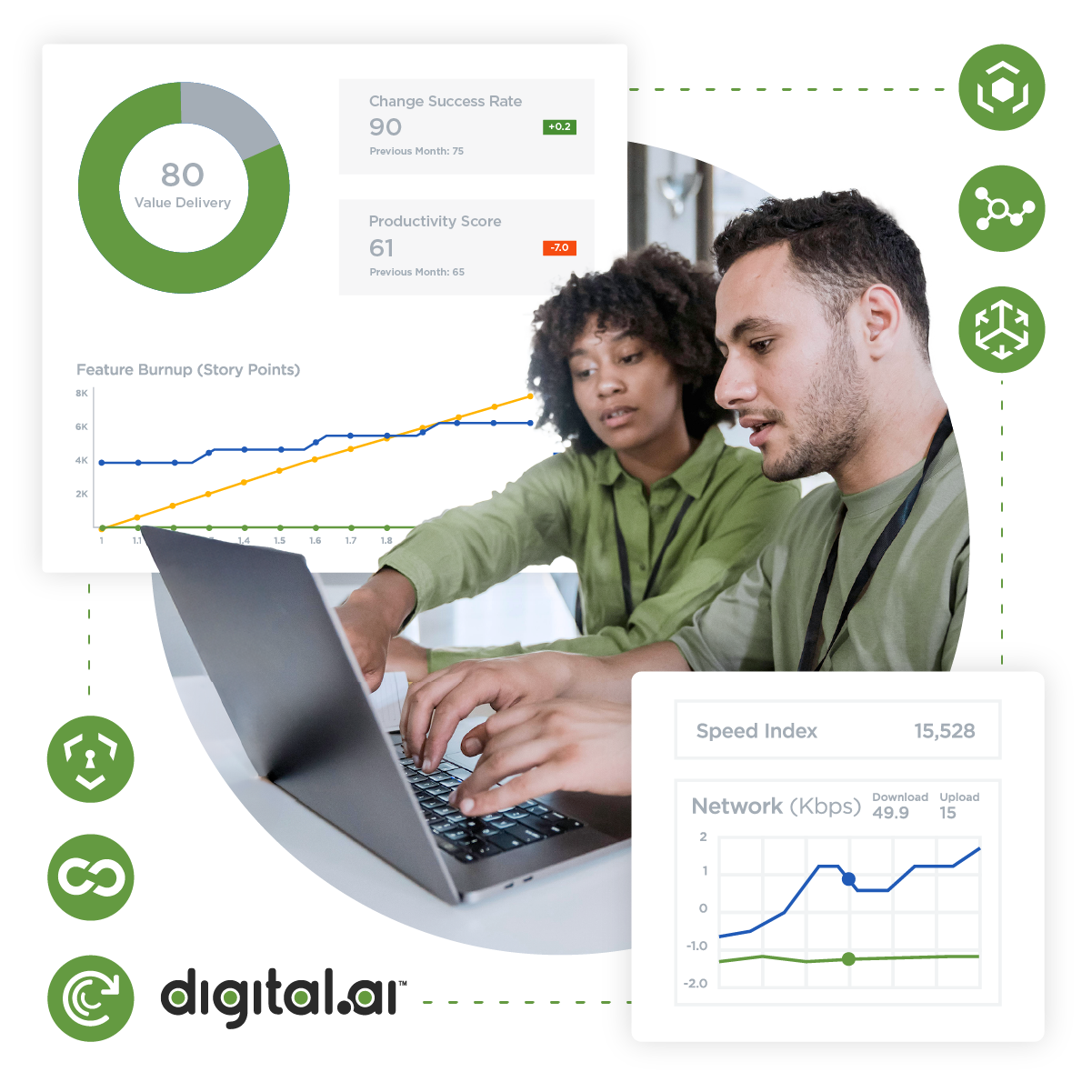Table of Contents
Table of Contents
Related Blogs
Overview of Self-Healing Software
Self-healing software is revolutionizing web and mobile application testing. It empowers applications to autonomously detect, diagnose, and rectify issues without human intervention. The benefits are numerous and attainable, including enhanced reliability, improved user experience, increased efficiency, reduced operational costs, accelerated innovation, and enhanced security.
Importance and Benefits
In fact, self-healing software improves overall system reliability significantly, as it proactively identifies and resolves problems and reduces downtime. This leads to a seamless and positive user experience, with minimized disruptions and significantly faster recovery times. Additionally, automated fault resolution streamlines operations, freeing up valuable resources for other critical tasks and increasing overall efficiency. Moreover, proactive maintenance and reduced downtime contribute to significant cost savings. Developers can focus on creating new features and functionalities rather than spending time on troubleshooting and maintenance, accelerating innovation.
Security threats are no bother to self-healing software that quickly identifies and responds to security threats, minimizing potential damage. In today’s increasingly complex digital landscape, self-healing software is becoming essential to modern applications, enabling them to adapt to changing conditions and maintain optimal performance.
| Component | Sub-Component | Description |
|---|---|---|
| Monitoring and Detection Systems | Play a crucial role in self-healing applications by enabling intelligent decision-making and autonomous actions. | |
| Real-Time Monitoring | Tracks key performance indicators (KPIs) such as CPU usage, memory consumption, network latency, and response times. | |
| Log Analysis | Scrutinizes system logs to detect error messages, exceptions, and unusual patterns. | |
| Threshold-Based Alerts | Sets predefined thresholds for critical metrics and triggers alerts when these thresholds are exceeded. | |
| Anomaly Detection | Employs machine learning algorithms to identify deviations from normal behavior. | |
| Automated Diagnosis Mechanisms | Work to pinpoint the root cause of failures. | |
| Error Correlation | Analyzes multiple data sources to identify the underlying problem. | |
| Root Cause Analysis | Uses techniques like fault trees or causal analysis to determine the origin of the issue. | |
| Knowledge-Based Systems | Leverages expert systems or rule-based engines to apply domain-specific knowledge to diagnose problems. | |
| Machine Learning Models | Trains AI models to recognize patterns in historical data and predict future failures. | |
| Recovery and Healing Processes | The final components of self-healing software which have the ability to automatically recover from failures. | |
| Rollback Mechanisms | Reverts the system to a previous stable state. | |
| Self-Repair | Automatically fixes minor issues, such as configuration errors or software bugs. | |
| Redundancy and Failover | Employs redundant components to ensure continuous operation. | |
| Patching and Updating | Applies security patches and software updates to prevent future issues. | |
| Adaptive Response | Adjusts system behavior based on real-time conditions and feedback loops. |
Technologies Enabling Self-Healing Software
| Technology | Sub-Category | Description |
|---|---|---|
| Machine Learning and Artificial Intelligence | Enables intelligent decision-making and autonomous actions. | |
| Anomaly Detection | AI algorithms can identify unusual patterns in system behavior, signaling potential issues. | |
| Predictive Maintenance | Analyzes historical data to predict future failures and schedule preventive maintenance. | |
| Root Cause Analysis | AI-powered tools quickly pinpoint the root cause of complex problems. | |
| Adaptive Response | AI enables systems to adjust their behavior based on changing conditions dynamically. | |
| Autonomous Computing Framework | Provide the foundation for building self-healing systems. | |
| Self-Configuration | Automatic configuration and optimization of system parameters. | |
| Self-Optimization | Continuous fine-tuning of system performance. | |
| Self-Protection | Automated security measures to safeguard the system. | |
| Self-Healing | Autonomous recovery from failures and attacks. | |
| Cloud Computing and Edge Infrastructure | Provide the scalability, flexibility, and distributed computing power necessary for self-healing systems. | |
| Scalability | Dynamically scaling resources to meet changing demands. | |
| Fault Tolerance | Redundancy and failover mechanisms to ensure high availability. | |
| Distributed Computing | Processing data closer to the source for faster response times. | |
| Real-Time Analytics | Analyzing data in real-time to enable immediate responses. |
Implementation Strategies
Designing for Resilience is a fundamental principle of self-healing software. Some important considerations are:
- Modular Architecture: Breaking down the system into smaller, independent modules to isolate failures.
- Redundancy: Implementing redundant components to ensure continuous operation.
- Fault Tolerance: Designing systems to withstand failures without compromising functionality.
- Asynchronous Communication: Using asynchronous communication protocols to reduce the impact of network failures.
- Error Handling and Recovery: Implementing robust error handling mechanisms and recovery procedures.
Integrating Self-Healing Capabilities in Existing Systems requires a phased approach:
- Identify Critical Components: Determine the most critical components that require self-healing capabilities.
- Implement Monitoring: Establish a comprehensive monitoring system to track system health.
- Develop Automated Diagnosis: Create automated diagnosis tools to identify the root cause of issues.
- Implement Recovery Mechanisms: Develop automated recovery procedures, such as rollback, restart, or repair.
- Iterative Improvement: Continuously monitor and refine the self-healing application capabilities based on feedback and performance metrics.
Best Practices and Challenges
| Best Practice | Challenge |
|---|---|
| Clear Requirements: Define clear requirements for self-healing capabilities. | Complexity: Designing and implementing complex self-healing mechanisms can be challenging. |
| Collaboration Between Teams: Foster collaboration between development, operations, and security teams. | Cost: Investing in self-healing technologies can be costly. |
| Testing and Validation: Thoroughly test self-healing mechanisms to ensure their effectiveness. | Security Risks: Self-healing systems can introduce new security vulnerabilities. |
| Continuous Learning and Improvement: Continuously learn from failures and improve the system. | Human Oversight: Maintaining human oversight is essential to ensure the system functions as intended. |
Real-World Applications and Examples
Software Systems
- Web Applications: Self-healing mechanisms can automatically detect and fix bugs, optimize performance, and recover from crashes.
- Cloud-Based Applications: Cloud platforms can leverage self-healing application techniques to ensure high availability and rapid recovery from failures.
- Enterprise Software: Self-healing capabilities can minimize downtime and improve the overall reliability of critical business applications.
Network Systems
- Network Infrastructure: Self-healing networks can automatically detect and repair network failures, such as link failures or router malfunctions.
- Wireless Networks: Self-healing wireless networks can automatically adjust to changing conditions and optimize network performance.
- SD-WAN: Software-Defined Wide Area Networks can use self-healing techniques to dynamically reroute traffic and maintain connectivity.
Database Systems
- Relational Databases: Self-healing database systems can automatically recover from data corruption, hardware failures, and software bugs.
- NoSQL Databases: Self-healing NoSQL databases can automatically rebalance data, handle node failures, and optimize performance.
- Data Warehouses: Self-healing data warehouses can automatically detect and repair data inconsistencies, optimize query performance, and recover from data loss.
Designing Self-Healing Software Applications
This requires an understanding of both system and user requirements:
User Requirements
- Reliability: Users expect the system to be highly reliable, with minimal downtime.
- Performance: The system should perform efficiently and respond to user requests promptly.
- Security: The system must be secure and protect sensitive data from unauthorized access.
- Usability: The system should be easy to use and understand.
System Requirements
- Scalability: The system should be able to handle increasing workloads and data volumes.
- Flexibility: The system should be adaptable to changing requirements and technological advancements.
- Maintainability: The system should be easy to maintain and update.
- Self-Healing Capabilities: The system should be able to detect, diagnose, and recover from failures automatically.
Designing for Resilience
Redundancy
Designing for resilience necessitates redundancy. It involves duplicating critical components to minimize the impact of failures using some of the following techniques:
- Hardware Redundancy: Duplicating hardware components like servers, storage devices, and network switches.
- Software Redundancy: Running multiple instances of software components to provide backup.
- Data Redundancy: Creating and storing multiple copies of data in different locations.
Fault Tolerance
Fault tolerance enables systems to continue operating even when components fail. Key fault tolerance techniques include:
- Error Detection and Correction: Implementing mechanisms to detect and correct errors in data transmission and storage.
- Watchdog Timers: Using timers to monitor system processes and automatically restart them if they become unresponsive.
- Checkpointing: Periodically saving the system’s state to allow for recovery in case of failures.
- Load Balancing: Distributing workload across multiple servers to prevent overload and improve performance.
Building an Error Detection Mechanism
Monitoring
Monitoring is essential for early detection of errors and anomalies. You might try the following:
- System Metrics: Monitoring system metrics like CPU usage, memory consumption, disk I/O, and network traffic.
- Log Analysis: Analyzing system logs to identify error messages, warnings, and exceptions.
- Performance Monitoring: Tracking response times, throughput, and latency.
- Application Performance Monitoring (APM): Monitoring the performance of individual application components.
Alerts and Notifications
Alerts and notifications are crucial for timely response to errors. Some key alert and notification mechanisms are:
- Email Alerts: Sending email notifications to relevant personnel.
- SMS Alerts: Sending SMS messages to key stakeholders.
- Push Notifications: Sending notifications to mobile devices.
- PagerDuty: Using a dedicated incident management tool to escalate alerts.
- Visual Dashboards: Displaying system health and performance metrics on dashboards.
Designing the Recovery Process
Self-Correction
Self-correction mechanisms enable systems to recover from minor errors and anomalies automatically using:
- Retry Mechanisms: Automatically retrying failed operations.
- Rollback: Reverting the system to a previous stable state.
- Configuration Updates: Automatically update system configurations to address issues.
- Patching and Updating: Applying software patches and updates to fix vulnerabilities and improve security.
Auto-Restart/Reset Functions
Auto-restart/reset function can be used to recover from system crashes or software hangs:
- Watchdog Timers: Monitoring system processes and automatically restarting them if they become unresponsive.
- Automated Restart Scripts: Executing scripts to restart failed services or applications.
- Failover Mechanisms: Switching to redundant components to maintain system availability.
Benefits and Impact
Cost Reduction and Efficiency
- Reduced Operational Costs: Self-healing software can significantly reduce operational costs by automating routine tasks and minimizing human intervention.
- Increased Productivity: Automating error detection and recovery frees up valuable time for IT teams to focus on strategic initiatives.
- Improved Resource Utilization: Self-healing systems can optimize resource allocation, leading to better utilization of hardware and software resources.
Reduced Downtime and Improved Reliability
- Minimized Service Disruptions: Self-healing software can quickly identify and resolve issues, reducing downtime and improving service availability.
- Enhanced System Resilience: Proactively addressing potential problems can significantly enhance system resilience.
- Improved User Satisfaction: Reduced downtime and faster recovery times lead to a better user experience and increased satisfaction.
Self-healing software represents a significant advancement in software engineering, offering a proactive and autonomous approach to maintaining system health and reliability. Leveraging cutting-edge technologies like machine learning, AI, and cloud computing allows self-healing systems to significantly reduce downtime, improve performance, and enhance overall user experience. As the complexity of software systems continues to grow, self-healing software will become an indispensable tool for ensuring the smooth operation of critical applications and infrastructure.
Demo Our AI-Powered Self Healing
Explore
What's New In The World of Digital.ai
Guide: Mobile Automation with Appium in JavaScript
Learn to automate mobile apps with Appium and JavaScript. Our guide includes setup, test writing, and advanced features to streamline your testing process.
Digital.ai and Packaged Agile Partner to Help Enterprises and Agencies Reclaim the Value of Agile
Digital.ai and Packaged Agile: A Strategic Partnership That Reconnects Agile Delivery with Real Business & Mission Outcomes to be More Efficient & Effective
Announcing Quick Protect Agent: MASVS-Aligned Protections, Now Easier Than Ever
Easily apply OWASP MASVS-aligned protections to your mobile apps—no coding needed. Quick Protect Agent delivers enterprise-grade security in minutes.





